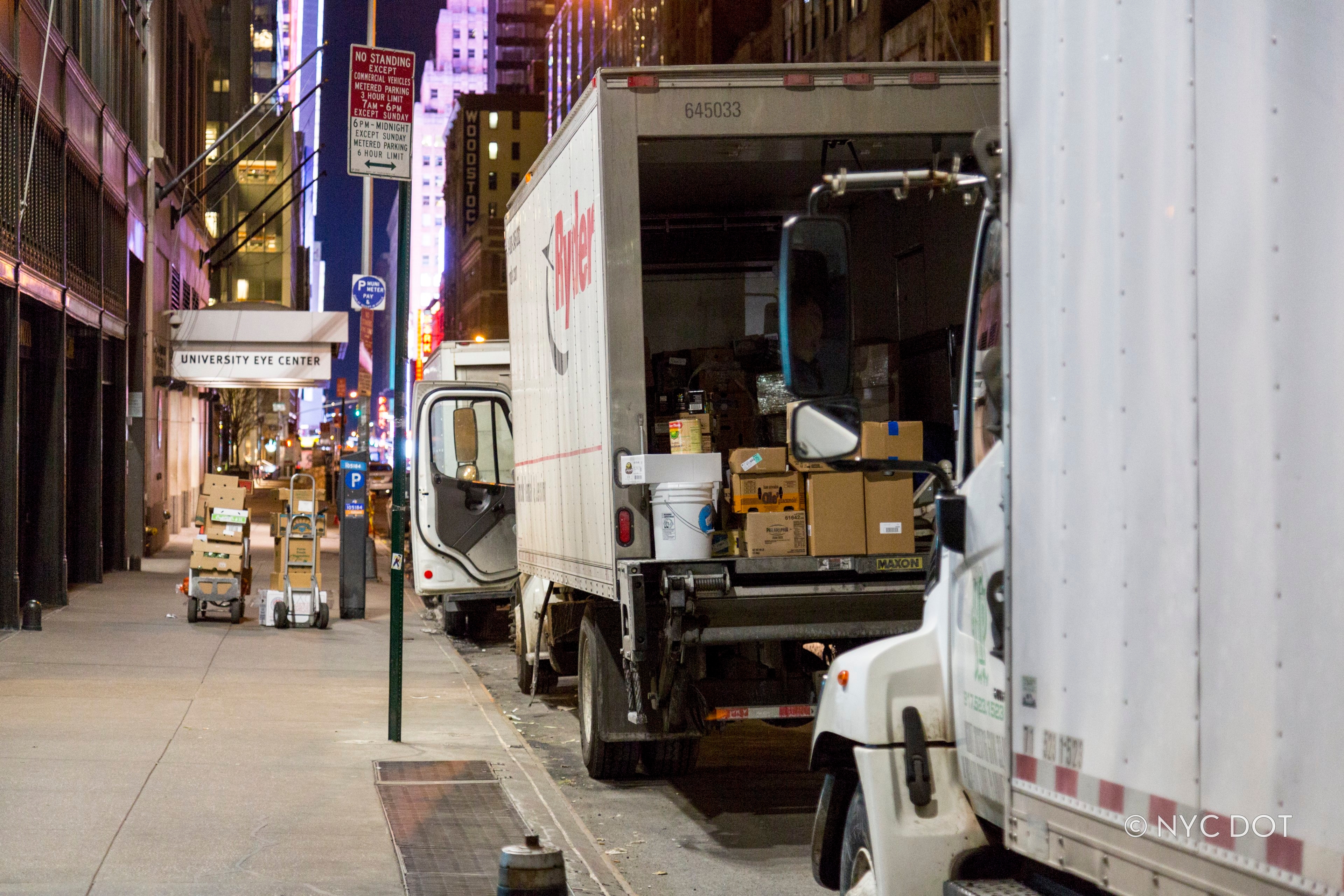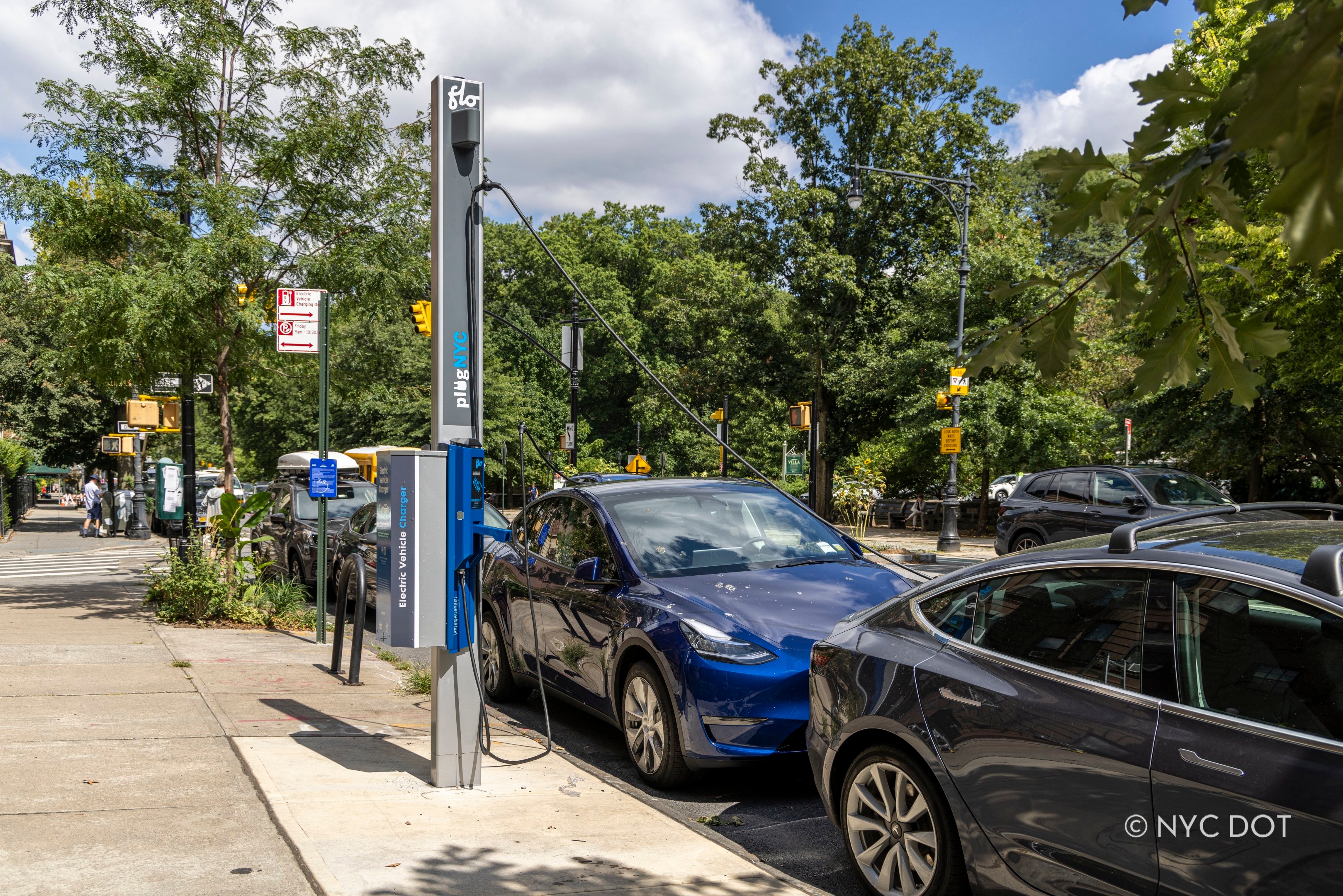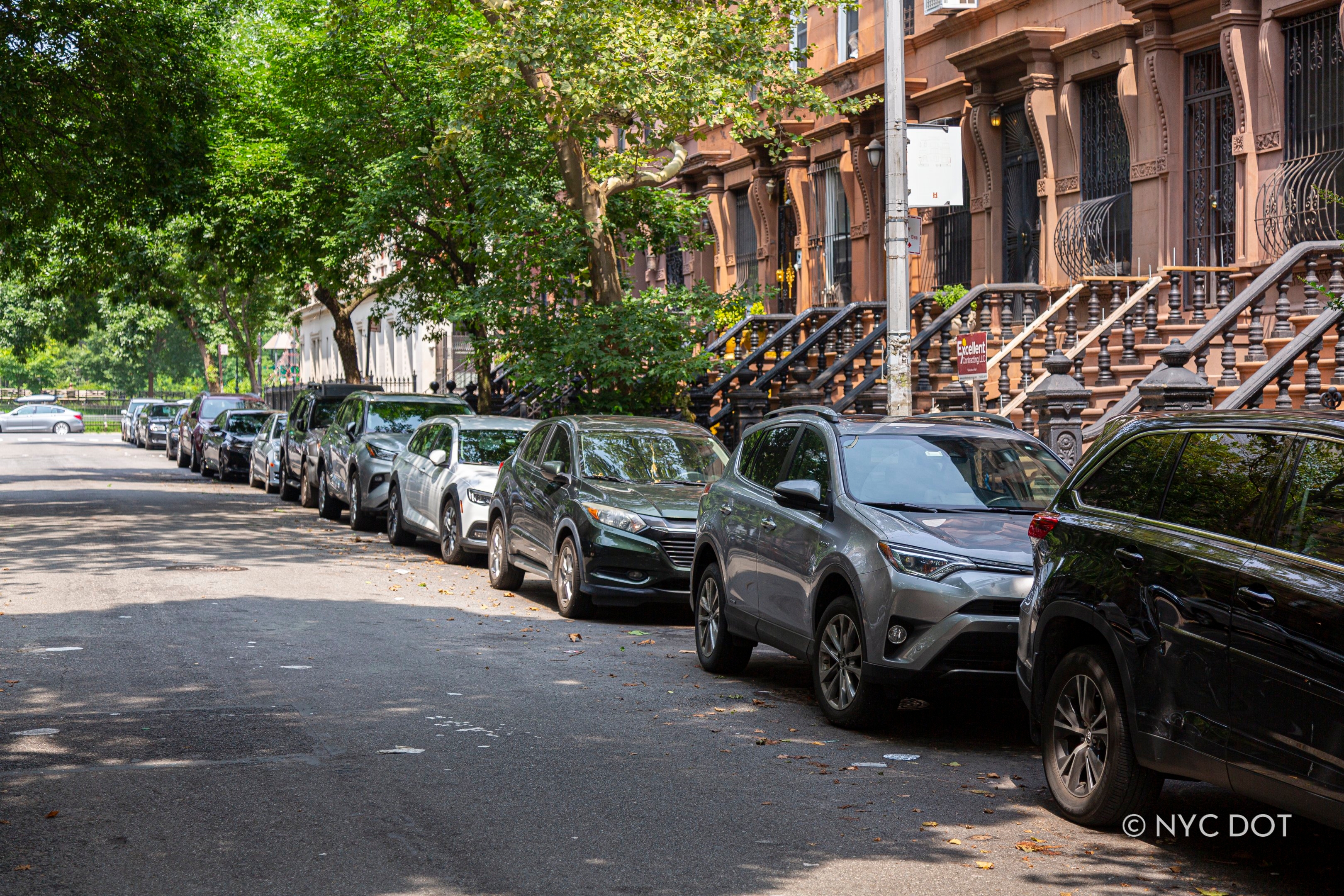Parking
Since overnight parking was first legalized in the city in the 1950s, curb space has evolved to predominantly serve the purpose of private vehicle parking. However, New York City stands out as a leader in car-free living, with only 46% of households owning vehicles compared to the national average of 92% in 2021. Recognizing the need for a more dynamic curb, NYC DOT has implemented strategies such as modifying parking regulations to reflect current patterns, introducing more commercial parking, dedicated carshare parking spaces, and electric vehicle chargers to the curb. A vast majority, approximately 56%, rely on public transit for their daily commute. In response to this trend, NYC DOT has been strategically reallocating curb space to the public, supporting programs that repurpose curb lanes to enhance overall quality of life. This shift underscores the importance of updating regulations, programming, and policies to ensure equitable and efficient use of curb space that reflects the evolving needs of the City's communities. For details on carshare parking, visit NYC DOT Carshare.
Electrification
In keeping with the City’s greenhouse gas emission reduction goals as outlined in the 1.5°C Climate Action Plan and 80x50, the City in partnership with Consolidated Edison (Con Ed) installed 100 Level 2 charging ports for the public to use at curbside locations citywide.
The City is currently developing the PlugNYC program, a comprehensive network of publicly accessible Level 2 and DC fast chargers allowing EV owners to charge their vehicles while parked at home, at work, or on the street. For more information, visit FLO and review Electrical Vehicle Charger.
Freight
Nearly 90% of New York City's goods are transported by trucks, contributing to congestion, environmental concerns, and safety risks. To address these challenges, NYC DOT is advancing freight management strategies that improve delivery efficiency and promote sustainable last-mile solutions.
The Commercial Cargo Bicycle Initiative encourages companies to use cargo bicycles to make local and last mile deliveries. This alternative delivery mode reduces truck traffic and cuts emissions. The initiative encourages the expansion of commercial cargo biking through infrastructure modifications, education campaigns and industry outreach. The infrastructure modifications include access to commercial vehicle loading zones, designated cargo bike parking, and expansion of bike lanes, ensuring efficient curbside operations and reducing congestion.
Additionally, NYC DOT is launching a three-year Microhub Pilot Program to create local delivery hubs where trucks can transfer packages to smaller, low-emission vehicles and human-powered modes like cargo bikes and handcarts. These microhubs will be located curbside or in off-street areas to facilitate last-mile deliveries while reducing the number of large trucks on local streets. For more information, review Microhubs.
To further enhance freight movement, NYC DOT’s Off-Hour Deliveries (OHD) Program encourages businesses to shift deliveries to evening and overnight hours to help reduce congestion, double parking, and truck emissions during peak hours. This program works with businesses and delivery services to identify the most efficient off-peak delivery methods.
Loading zones are a useful freight management tool to help facilitate deliveries in both residential and commercial contexts by providing dedicated curb access for loading activity. Implementing loading zones may help reduce double parking on congested or narrow streets and enhance safety and reliability for all road users. Examples include Neighborhood Loading Zones, Truck Loading Zones, and Commercial Metered Parking.

W 42nd Street, Manhattan

Prospect Park West, Brooklyn

Street Parking, Manhattan